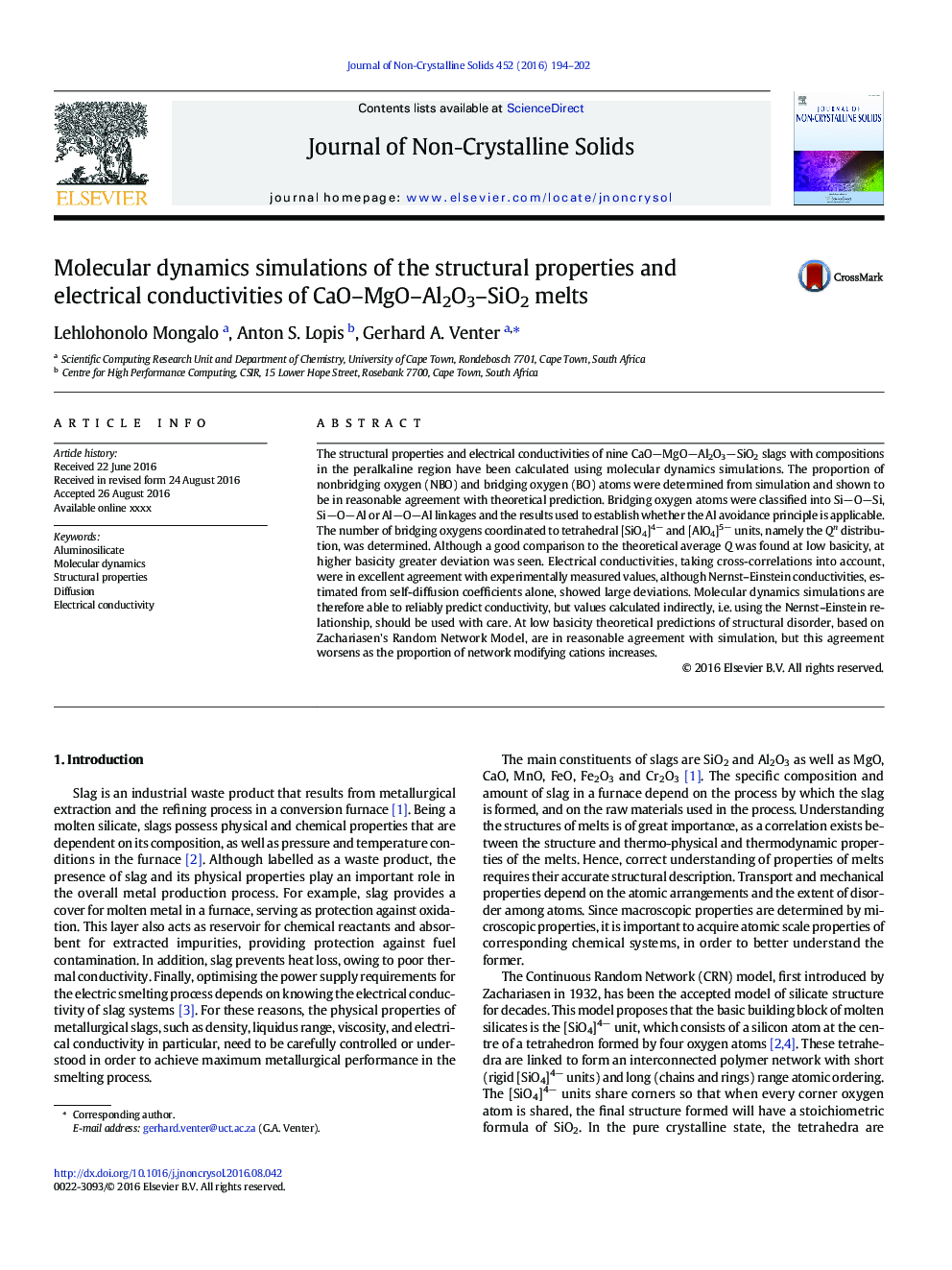| Article ID | Journal | Published Year | Pages | File Type |
|---|---|---|---|---|
| 7900595 | Journal of Non-Crystalline Solids | 2016 | 9 Pages |
Abstract
The structural properties and electrical conductivities of nine CaOâMgOâAl2O3âSiO2 slags with compositions in the peralkaline region have been calculated using molecular dynamics simulations. The proportion of nonbridging oxygen (NBO) and bridging oxygen (BO) atoms were determined from simulation and shown to be in reasonable agreement with theoretical prediction. Bridging oxygen atoms were classified into SiâOâSi, SiâOâAl or AlâOâAl linkages and the results used to establish whether the Al avoidance principle is applicable. The number of bridging oxygens coordinated to tetrahedral [SiO4]4â and [AlO4]5â units, namely the Qn distribution, was determined. Although a good comparison to the theoretical average Q was found at low basicity, at higher basicity greater deviation was seen. Electrical conductivities, taking cross-correlations into account, were in excellent agreement with experimentally measured values, although Nernst-Einstein conductivities, estimated from self-diffusion coefficients alone, showed large deviations. Molecular dynamics simulations are therefore able to reliably predict conductivity, but values calculated indirectly, i.e. using the Nernst-Einstein relationship, should be used with care. At low basicity theoretical predictions of structural disorder, based on Zachariasen's Random Network Model, are in reasonable agreement with simulation, but this agreement worsens as the proportion of network modifying cations increases.
Related Topics
Physical Sciences and Engineering
Materials Science
Ceramics and Composites
Authors
Lehlohonolo Mongalo, Anton S. Lopis, Gerhard A. Venter,
